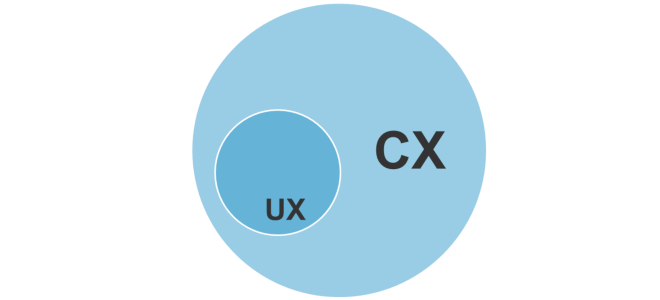User experience (UX) and customer experience (CX) have been two terms thrown around the marketing world for quite some time, but as UX becomes more and more important as digital grows, the lines between the two terms seem to have become blurred over the years. While it’s true that UX is newer and more talked-about online and in the industry, that does not mean that CX has disappeared or meshed in with UX. The difference between the two is still very much defined for successful companies, so it’s important that your company isn’t making the mistake of using the two terms interchangeably.
The moral of the story is that understanding the differences between customer experience and user experience is crucial. While they are related, thinking about the two separately can help you make sure you’re not missing a beat when it comes to a customer’s overall experience with your brand. The sooner you can master the two brand experiences the better.
What Customer Experience (CX) Entails for Most Companies
Customer experience is the umbrella term. CX covers all interactions a person has with your brand, not just what happens online. In other words, it encompasses many things that user experience does not, but everything that user experience entails still falls under the customer service umbrella (more on that later). Unfortunately, many companies focus so much on UX and assume that it is mutually exclusive with CX, but that is far from the truth. It’s important to consider CX by itself so that you’re covering all of your bases for your customers.
To help understand this, a few things customer experience includes:
- How the call or visit with a customer service representative went. Did they answer questions correctly? Were they professional?
- If the product was delivered on time and in good condition.
- CX is measured by how likely someone is to recommend your brand to others, if they plan to use your brand in the future, and most importantly customer reviews.
CX and UX experience are both equally important, but it’s usually CX that gets ignored in favor of UX. However, according to New Voice Media, in 2015 phones still handle around 68% of all contact center communications (this includes emailing, social media, live chats, and more). Making sure you have a strategy in place for these kinds of interactions is therefore just as important as website interactions.
A good way to get started creating a strategy is to learn more about what customers do and do not like when it comes to call centers. Visit here for more statistics on how to make your experience the best. Hint: No one likes to listen to a long list of options before speaking to an operator, and no one likes to hear that there is absolutely nothing a business can do for them.
Train your staff to be not only professional, but have coupons on alternative options ready for those who had a bad experience to help make sure you’re always doing something to help the customer.
What User Experience (UX) Really Means and How It Differs from CX
As discussed above, user experience is a subsection of customer experience and focuses strictly on the experience someone has when they visit your website. How a customer interacts with your website will affect their overall customer experience, but thinking of user experience separately is important because it is such a huge subject under that CX umbrella. In fact, UX has many subsections all on its own because it is such a large topic, which is why so many think of UX as its own entity.
A few different aspects that user experience includes:
- How your site appears on different mediums including mobile, desktop, different browsers, other sized screens such as tablets or smart watches, etc.
- The navigation of your website, page load time, internal and external link options to click to learn more, relevant content, etc.
- You measure with metrics such as success rate, bounce rate, how long it takes them to complete a task, CTR, and conversions. Think Google Analytics here.
UX is probably where you’ve spent the most time developing a strategy. SEO and web design are both huge parts of UX and both have several different steps to get right, so I recommend visiting our service page to learn more about where to get started if you’re new to UX.
In the end, the biggest takeaway from this is the fact that you need to put a focus on both UX and CX and not just one or the other. It’s usually CX that gets put on the backburner, so it’s most important to remember that even if you feel your audience spends more of their time online, you have to account for the few instances that an interaction with a staff member occurs or a review covers something that has nothing to do with your website.
Does your company have a strategy in place for both UX and CX? In what ways do you separate the two and in what ways do they work together for your business? Let us know in the comment section below.
Photo Credit: Forrester.com
